Design
-
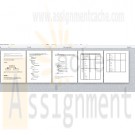
CMIS 102 Assignment 2 build a state-of-the-art gaming computer
$12.00CMIS 102 Assignment 2 build a state-of-the-art gaming computer
Design a program to perform the following task:
Calculate the total price to purchase all the components required to build a state-of-the-art gaming computer from components available on the internet.[Hints: Before attempting this exercise, be sure you have completed all of chapter 3 and course module readings, participated in the weekly conferences, and thoroughly understand the examples throughout the chapter. As before, there are 3 main components of your submission including the problem analysis, program design and documentation, and sample test data.]
Part 1: Analysis [5 points]
Using a similar approach as example 3.6 (textbook page 146): “A new Car Price Calculator”, provide your analysis for the following problem statement: You need to write a program that will calculate the total price to purchase all the components required to build a state-of-the-art gaming computer from newegg.com. You will need to conduct some analysis on newegg.com (or amazon.com) regarding the possible options and prices to be considered. However; assume the computer will consist of the following components:CPU
Case
Power supply
Motherboard
Hard Drive
RAM
DVD
Sound Card
Monitor
Graphics Card
Operating SystemI would recommend you keep the option choices limited to 3 different components, or your program will really grow fast. For example, you could provide options for the Operating System (Windows 7, Red Hat Linux), the RAM (4 MB, 8 MB, 12 MB) and the Hard Drive Size (500 GB, 1 TB, 1.5 TB) and leave everything else as a baseline. I leave it up to you to determine which components you want to add options for and for researching the approximate prices. Be sure your prices are fairly realistic.
Your analysis should be clearly written and demonstrate your thought process and steps used to analyze the problem. Be sure to include what is the required output? What is the necessary input and how you will obtain the required output from the given input? Also, include your variable names and definitions. Be sure to describe the necessary formulas and sample calculations that might be needed.Part 2: Design [5 points]
Using a similar approach as example 3.6 (textbook page 146): “A new Car Price Calculator”, provide your program design for the program you analyzed for calculating the total price of your gaming computer. Be sure to describe the fundamental tasks (i.e., things your program must do) needed to solve the problem so you can use a modular design. Provide pseudocode of your overall design that includes the Main module and the order of the module calls (see page 148 for an example) and a Hierarchy chart for the computer price calculator (see figure 3.8 page 148). Finally, list all of your pseudocode for each module. (See pages148-150 as an example.)Include header and step comments in your pseudocode, using a similar approach as the example provided in section 2.3 (textbook page 86). See example 2.8 on pages 87-88).
Part 3: Test Data [3 points]
Learn More
Prepare at least 5 sets of input data (Test data) along with their expected output for testing your program. Your test data can be presented in the form of a table as was shown in Assignment 1. Be sure that you provide expected output for each test case. -
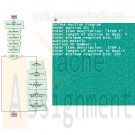
Programming Logic and Design Eight Edition Chapter 4 Exercise 5 A
Regular Price: $12.00
Special Price $10.00
Programming Logic and Design Eight Edition Chapter 4 Exercise 5 A
ShoppingBay is an online auction service that requires several reports. Data for each item up for auction includes ID number, item description, length of auction in days, and minimum required bid. Design for the following:
a. A program that accepts data for one auctioned item. Display data for an auction only if the minimum required bid is over $100.00.
Learn More -
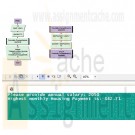
Programming Logic and Design Eight Edition Chapter 9 Exercise 4
Regular Price: $12.00
Special Price $10.00
Programming Logic and Design Eight Edition Chapter 9 Exercise 4
Create the logic for a program that accepts an annual salary as input. Pass the salary to a method that calculates the highest monthly housing payment the user can afford, assuming that the year's total payment is no more than 25 percent of the annual salary.
Learn More -
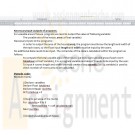
CMIS 102 Assignment 1 Usable Area of house
Regular Price: $15.00
Special Price $12.00
CMIS 102 Assignment 1 Usable Area of house
In this assignment, you will design a program to perform the following task:
Calculate the usable area in square feet of house. Assume that the house has a maximum of four rooms, and that each room is rectangular1. Using a similar approach as example 2.3 (textbook page 75): "Finding the Sale Price of Items in a Department Store", provide your analysis for the following problem statement:
You need to write a program that will calculate the number of square feet (living space) in a 4-room house. Your analysis should be clearly written and demonstrate your thought process and steps used to analyze the problem. Be sure to include what is the required output? What is the necessary input and how you will obtain the required output from the given input? Also, include your variable names and definitions. Be sure to describe the necessary formulas and sample calculations that might be needed.2. Using a similar approach as the example provided in section 2.2(textbook page 78) for "The Sale Price Program continued", provide your program design for the program you analyzed for calculating the number of square feet in a house. Be sure to describe the fundamental tasks needed to solve the problem so you can use a modular design. Provide pseudocode of your overall design that includes the Main module and the order of the module calls (see page 82 for an example). Finally, list all of your pseudocode for each module (See example 2.6 on page 83 as an example).
Include header and step comments in your pseudocode, using a similar approach as the example provided in section 2.3 (textbook page 86). See example 2.8 on pages 87-88).3. Prepare at least 3 sets of input data (Test data) along with their expected output for testing your program. Your test data can be presented in the form of a table as follows (note: feel free to adapt to your design)
Learn More -
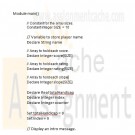
Handicap of a golfer Module 3 Pseudo Code
Regular Price: $15.00
Special Price $12.00
Handicap of a golfer Module 3 Pseudo Code
Because an official handicap requires up to 10 scores, you will need to modify the previous program to accept multiple scores, process the scores, and provide the user with their handicap.
Create a Do-While loop that runs up to 10 time that asks the user to enter up to 10 scores, which include the slope and rating for the course, and calculates the handicap for each score. You will need to use either parallel arrays or a two-dimensional array in order to store the score, slope and rating for each entry, and variables for the handicap accumulator and number of scores entered. The user will enter a 0 in score to exit the loop before entering 10 scores.
Once all scores have been entered, insert a new loop to read the array and display all of the scores. After you exit this loop, you need to display the average handicap with this as well.
Learn More -
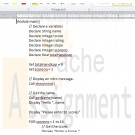
Handicap of a golfer Module 2 Pseudo Code
Regular Price: $15.00
Special Price $12.00
Handicap of a golfer Module 2 Pseudo Code
Because an official handicap requires 10 scores, you will need to modify the module 1 program to accept multiple scores, process the scores, and provide the user with their handicap.
Learn More
Tell the user that they will need to enter 10 scores, which include the slope and rating for the course. Create a loop that will run 10 times. In this loop you will print the score the user just entered, calculate the handicap and add the handicap to a handicap total variable.
After you executed the loop 10 times; exit the loop, divide the total handicap by 10, and display the user’s average handicap. -
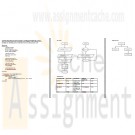
Chocolate Delights Candy Company Pseudocode Flowchart
Regular Price: $15.00
Special Price $12.00
Chocolate Delights Candy Company Pseudocode Flowchart
Chocolate Delights Candy Company manufactures several types of candy. Design a flowchart, pseudocode, data dictionary and hierarchy chart for the following:
Learn More
A program that accepts a candy name (for example, "chocolate-covered blueberries"), price per pound, and number of pounds sold in the average month, and displays the item's data only if it is a best-selling item. Best-selling items are those that sell more than 2000 pounds per month. -
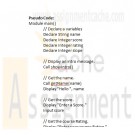
Handicap of a golfer Pseudo Code
Regular Price: $15.00
Special Price $12.00
Handicap of a golfer Pseudo Code
Design a modular program that will calculate the handicap of a golfer. The program should first ask the user for his/her name, store that in a variable, and use it to personalize the program (example: "Hello Bob"). Then ask the user to enter a Score, course Slope, and course Rating. You will then calculate their handicap and display it to the user.
The formula for calculating a handicap is:
Learn More
(((Score – Rating) * 113) / Slope) -
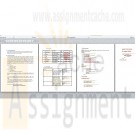
CMIS 102 Final Project Average age of your family and members living in Tennessee
Regular Price: $15.00
Special Price $12.00
CMIS 102 Final Project Average age of your family and members living in Tennessee
Your final project will be to analyze, design, and document a simple program that utilizes a good design process and incorporates sequential, selection and repetitive programming statements as well as at least one function call and the use of at least one array. The specific problem you need to solve for the final project is:
Design a program that will allow a user to Input a list of your family members along with their age and state where they reside. Determine and print the average age of your family and print the names of anyone who lives in Tennessee.There are 4 components of your submission including:
Program Description - A detailed, clear description of the program you are building.
Analysis - Demonstrates your thought process and steps used to analyze the problem. Be sure to include the required input and output and how you will obtain the required output from the given input? Also, include your variable names and definitions. Be sure to describe the necessary formulas and sample calculations that might be needed. Talk about the functions you plan to use and how you will use arrays. Be sure to talk about the types of programming statements that will be used on why.
Test plan - Prepare at least 3 sets of input data (Test data) along with their expected output for testing your program. Your test data can be presented in the form of a table as follows (note: feel free to adapt to your design)
Pseudocode - Provide pseudocode of your overall design that fulfills the requirements of the projectAll of these components should be placed in word document for submission.
Additional details about the program you need to write:
Learn More
Family sizes vary, however you should design to be able to enter at least 50 Family members.
Your test cases should have at least 5 family members.
Be sure to separate some functionality into functions or submodules. Having all functionality in the main module is not a good design.
Your design should consider how to indicate the family member entry is complete.
Carefully consider the best data type for each of your variables. (e.g. when to use Float versus Integers versus Strings) -
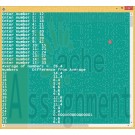
Display Average Visual Logic Program
$12.00Display Average Visual Logic Program
Design the logic for a program that allows a user to enter 15 numbers, then displays each number and its difference from the numeric average of the numbers entered.
Modify the program in 2a so that the user can enter any amount of numbers up to 15 until sentinel value is entered.
Learn More





